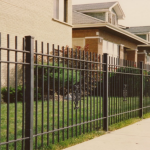Chronic back pain is one of the leading causes of disability worldwide, affecting millions of people each year. While it can result from a variety of factors such as injury, poor posture, or degenerative conditions, the pain often lingers for months or even years. For many people, conventional treatments such as pain medications, injections, or even surgery are considered necessary to alleviate symptoms. However, there’s a growing trend toward shockwave therapy as an effective, non-invasive alternative for back pain treatment.
Shockwave treatment has been increasingly utilized in musculoskeletal therapy to help individuals recover from various types of soft tissue injuries. But can it replace more invasive procedures for chronic back pain relief?
What is Shockwave Therapy?
Shockwave therapy (also known as extracorporeal shock wave therapy or ESWT) is a non-invasive treatment that uses high-energy sound waves to target damaged tissue. It’s commonly used to treat musculoskeletal conditions such as tendonitis, plantar fasciitis, and, more recently, back pain. The therapy works by emitting pressure waves through the skin to penetrate deep into the tissues, stimulating circulation and promoting the body’s natural healing processes.
The shockwaves help by:
• Breaking down scar tissue and adhesions in the affected area
• Reducing inflammation
• Increasing blood flow to promote tissue repair
• Encouraging the production of collagen and other necessary proteins for healing
While shockwave therapy can’t reverse all forms of back pain, it has shown significant promise in reducing chronic discomfort and accelerating recovery, especially in cases related to soft tissue and joint issues.
How Shockwave Therapy Works for Chronic Back Pain
Back pain can stem from a variety of conditions, including muscle strains, disc problems, and ligament injuries. Often, traditional treatments focus on managing the symptoms of back pain rather than addressing its root causes. While pain medications can mask the discomfort and physical therapy may improve mobility, neither approach may fully restore function or alleviate pain in the long term.
This is where shockwave therapy comes into play. It targets the source of the pain directly, improving healing at the cellular level. Shockwave therapy has several mechanisms of action that contribute to pain relief and faster recovery:
1. Stimulating Blood Flow for Healing
Shockwave therapy increases local blood circulation in the treated area, allowing more oxygen and nutrients to reach damaged tissues. This helps promote faster healing and reduces the duration of pain.
2. Reducing Inflammation
Inflammation is a common cause of chronic pain, particularly in soft tissues. The shockwaves help break down the chemicals responsible for inflammation, leading to reduced swelling and pain.
3. Encouraging Collagen Production
Collagen is essential for tissue repair. Shockwave therapy promotes the production of collagen, which is crucial for rebuilding tendons, ligaments, and other tissues in the back. This encourages the body’s natural healing processes, allowing the injured area to recover more quickly.
4. Breaking Down Scar Tissue
In cases of chronic back pain caused by past injuries, scar tissue can form around muscles or tendons, leading to stiffness and discomfort. Shockwave therapy helps break down this scar tissue, which can improve flexibility and reduce pain.
5. Decreasing Pain through Nerve Stimulation
Shockwave therapy stimulates the nerves in the affected area, reducing pain signals sent to the brain. This provides immediate relief from pain and reduces the need for painkillers or anti-inflammatory drugs.
Can Shockwave Therapy Replace Invasive Procedures?
Traditional methods of chronic back pain treatment often involve invasive procedures such as spinal injections or surgery. While these interventions can provide significant pain relief, they come with risks such as infections, complications, long recovery times, and potential side effects.
Shockwave therapy, on the other hand, is a non-invasive treatment that offers several advantages over traditional invasive methods. Here’s how it compares:
1. Less Risk and No Recovery Time
Unlike surgery, shockwave therapy involves no incisions or recovery time. It’s a quick procedure that requires minimal downtime, meaning patients can return to their regular activities almost immediately.
2. Reduced Need for Pain Medications
For individuals who suffer from chronic back pain, relying on pain medications can become problematic. Painkillers and anti-inflammatory drugs often have side effects, and long-term use can lead to dependency. Shockwave therapy, as a drug-free option, provides an effective solution without the need for long-term medication use.
3. Effectiveness for Soft Tissue Injuries
One of the key benefits of shockwave therapy is its ability to treat soft tissue injuries, which are often a major cause of chronic back pain. While spinal surgery or injections may be necessary for more severe cases of structural damage (like herniated discs), shockwave therapy has proven highly effective for treating muscle strains, tendonitis, and ligament injuries.
4. Faster Recovery
Shockwave therapy can accelerate the body’s healing process, allowing individuals to return to their daily activities more quickly than if they were to undergo surgery or rely on other traditional therapies. Since shockwave treatment works by stimulating tissue repair, the healing process is often faster and more effective.
5. Cost-Effectiveness
Surgery and spinal injections can be expensive, especially if multiple procedures are required. Shockwave therapy offers a cost-effective, non-invasive alternative that can provide lasting pain relief for a fraction of the cost of surgical treatments.
Who is a Candidate for Shockwave Therapy?
Shockwave therapy can be beneficial for individuals who suffer from chronic back pain due to soft tissue injuries, such as:
• Muscle strains and ligament sprains
• Tendonitis and tendinopathies
• Chronic myofascial pain
• Herniated discs (with no significant nerve damage)
• Degenerative conditions like osteoarthritis
It’s important to consult with a healthcare professional, such as a chiropractor, before beginning shockwave therapy to ensure that it is the right treatment for your specific condition.
Final Thoughts
For those suffering from chronic back pain, shockwave therapy presents a promising non-invasive alternative to traditional treatments like surgery and injections. By stimulating blood flow, promoting tissue regeneration, and reducing pain, shockwave therapy offers a safe, effective solution for back pain relief without the risks associated with invasive procedures.
If you’re looking for an alternative to surgery or pain medication, consider consulting with a trusted partner in chiropractic care. Working with a chiropractor can help you determine if shockwave therapy is right for your back pain and create a personalized treatment plan to support your long-term recovery.








